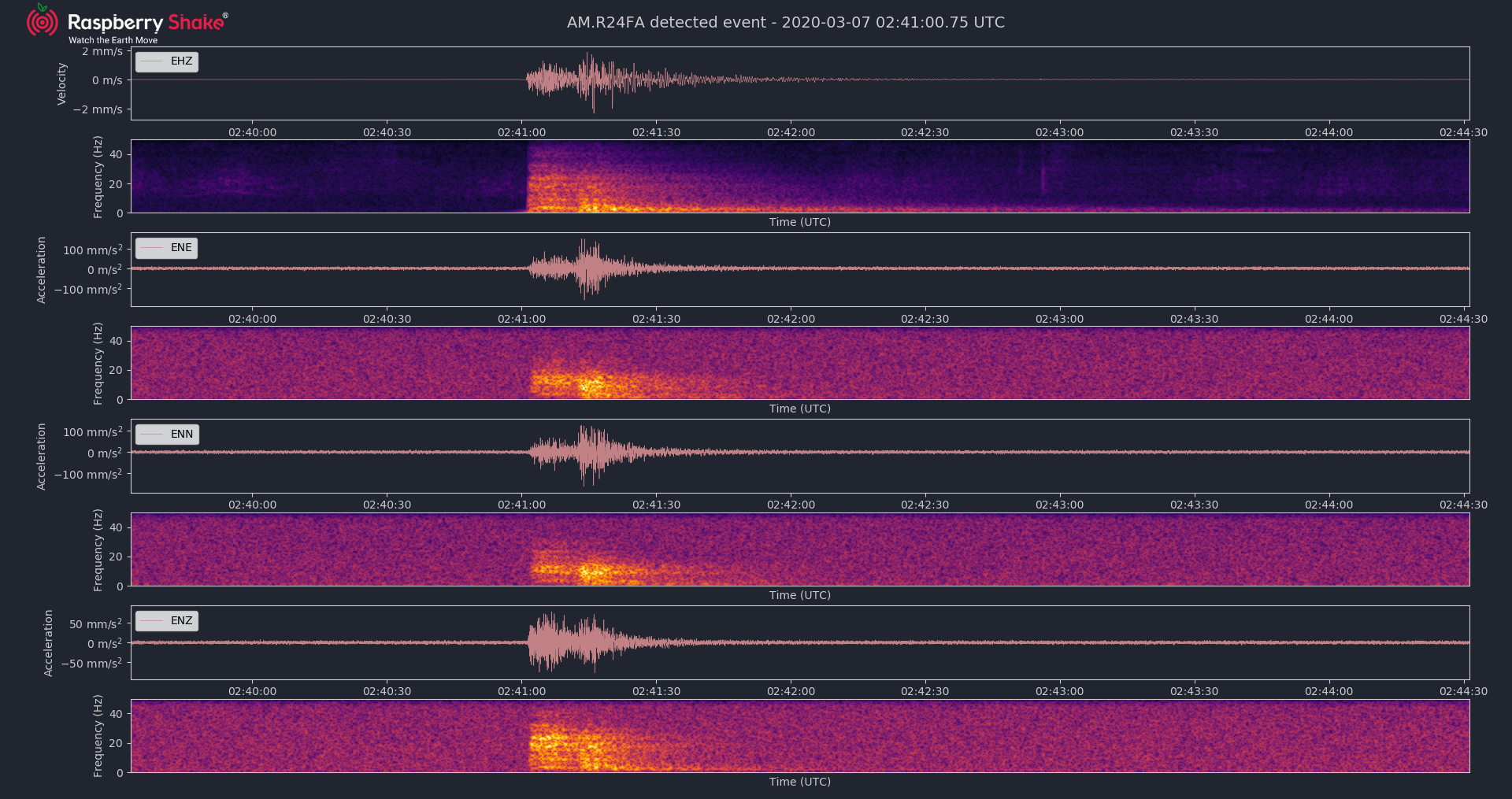Written by Ian Nesbitt (@iannesbitt) and Richard Boaz (@ivor)
rsudp is a tool for receiving and interacting with data casts from Raspberry Shake personal seismographs and Raspberry Boom pressure transducer instruments.
rsudp has full documentation here. We also have tutorial instructions to install, set up, and run rsudp there. Additionally, our documentation features YouTube walkthroughs, a brief Developer's guide, and module documentation.
rsudp contains ten main features:
- Alarm - an earthquake/sudden motion alert trigger, complete with a bandpass filter and stream deconvolution capabilities
- AlertSound - a thread that plays a MP3 audio file in the event of an alarm
- Plot - a live-plotting routine to display data as it arrives on the port, with an option to save plots some time after an alarm
- Tweeter - a thread that broadcasts a Twitter message when the alarm module is triggered, and optionally can tweet saved plots from the plot module
- Telegrammer - a thread similar to the Tweeter module that sends a Telegram message when an alarm is triggered, which can also broadcast saved images
- Writer - a simple miniSEED writer
- Forward - forward a data cast to another IP/port destination
- RSAM - computes RSAM (Real-time Seismic AMplitude) and either prints or forwards it to an IP/port destination
- Custom - run custom code when an
ALARMmessage is received - Print - a debugging tool to output raw data to the command line
rsudp is written in Python but requires no coding knowledge to run. Simply follow the instructions to install the software, go to your Shake's web front end, configure a UDP datacast to your computer's local IP address, start the software from the command line, and watch the data roll in.
(Above) a plot of an earthquake on the four channels of a Raspberry Shake 4D (EHZ---the geophone channel, and EHE, EHN, and ENZ---the accelerometer east, north, and vertical channels).







